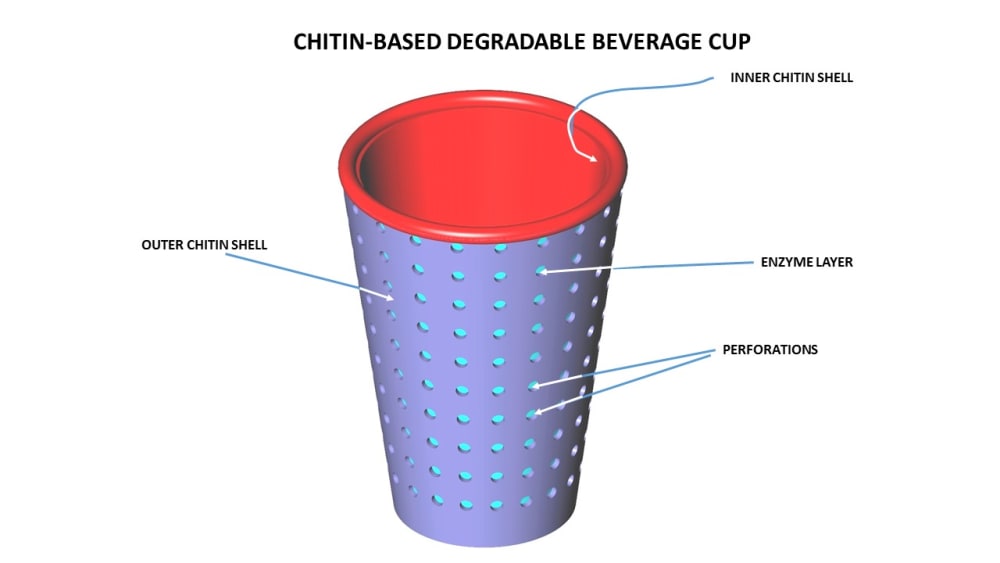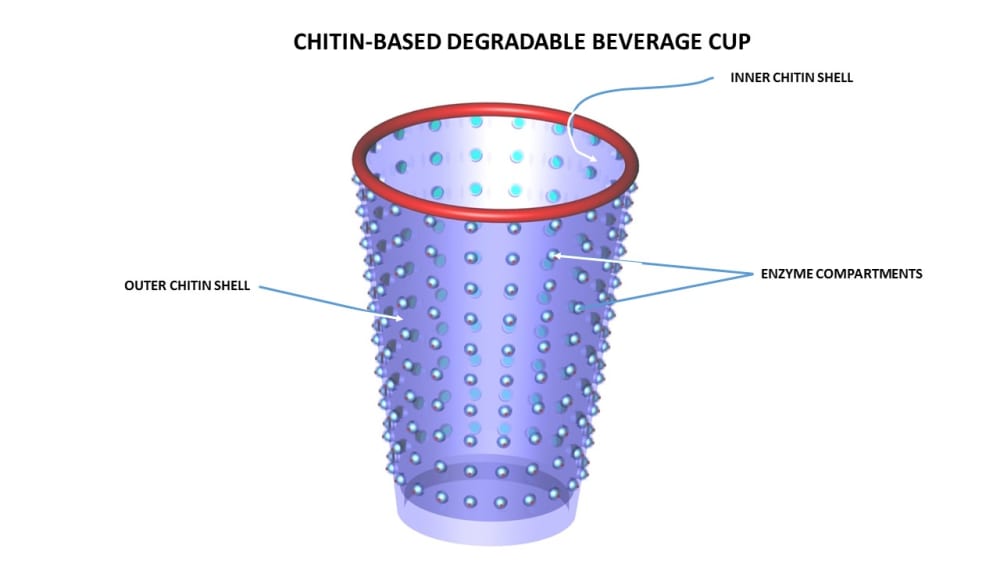The cup is made of chitin and contains compartments containing chitin-degrading enzymes ('chitanases').
Enzyme compartments have small openings to the outside of the cup.
Enzymes are initially in a dried (‘lyophilized’) state and are inactive.
Upon exposure to water in the environment (such as a landfill), the water enters enzyme compartments, reconstuting and re-activating the enzymes.
The reactivated enzymes then degrade the chitin of the cup into chitosan, an environmentally-friendly water-soluble compound which has numerous medical (surgical sutures), nutritional (food supplements), industrial (clarifiers, floculants) and agricultural uses (soil amendments).
Another version of a chitin-based cup contains 3 layers:
- internal water- and oil-impervious chitin layer,
- a porous layer containing embedded enzymes and
- an outer perforated chitin layer.
When moisture reaches the inner chitin layer through perforations, the enzymes are activated and degrade chitin into chitosan.
Thus, the cup can hold a wide types of liquids (including water) virtually indefinitely, but will degrade rapidly upon exposure to water from outside.
Chitin largely is a byproduct of shrimping industries worldwide. The current annual chitin creation volume is about 300,000 tons and it currently presents a disposal/environmental challenge since it degrades slowly in landfills.
In contrast, a chitin derivative chitosan is environmentally benign, valuable and used in divers applications.
A patent has been granted for this degradable cup.
Like this entry?
-
About the Entrant
- Name:Gary Abramov
- Type of entry:individual
- Software used for this entry:SOLIDWORKS





